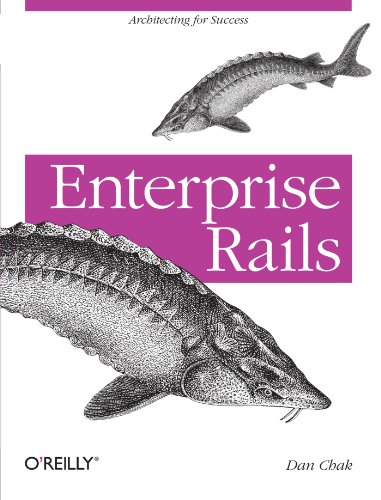My people are the greatest asset of my company
— most CEOs
Your data is the greatest asset of your company
— Dan Chak
Enterprise Rails
- Highly opinionated
- Not that much Rails stuff
- How to use database-level validations, triggers, and integrity checks with your web application
- (Possibly overkill)
By Dan Chak (2009)
Worked example
movie reservation site

Initial (naïve) Schema
https://danchak99.files.wordpress.com/2014/07/er_0501.jpg
Chapter 5
- Put validations in the data definition language (DDL)
- Write unit tests in Python to confirm you cannot sidestep validations from your app
- Add application-level validations like normal
- Now you are a fortress
Step zero for Data Fortess
Same schema
New stuff (constraints) in bold purple
create sequence movies_id_seq; create table movies ( id integer, name varchar(256), length_minutes integer, rating varchar(8), primary key (id) );

create sequence movies_id_seq; create table movies ( id integer not null default nextval('movies_id_seq'), name varchar(256) not null unique check (length(name) > 0), length_minutes integer not null check (length_minutes > 0), rating varchar(8) not null check (rating in ('Unrated', 'G', 'PG', 'PG-13', 'R', 'NC-17')), primary key (id) );
Caveat
And now you have created the possibility of drift between your database validations and your codebase.
*Caveat from my manager:
* Response:
The database must *always* be the source of truth. The instant any other user than the web app can touch the database you are hosed without db-level constraints.
Chapter 6
Third normal form (Don't Repeat Yourself)
- Rule of thumb to refactor your data model:
- If a column relates to another column that's not the primary key
- Then those paired columns should be factored out
- Congratulations you are DRY
Example for movies
If you add a 'rating description' column


- Never want a different description for the same rating
Caveat
Multiple joins add friction when coding and may increase query time
*Caveat about performance:
* Response:
True but you can add a view and triggers to make it appear like a non-normalized table for developers.
^ The trade-off is work in the database in order to maintain data integrity. The question is whether it's worth it for your use case.
Chapter 7
Domain data (knowledge belongs in-DB)
- Rule of thumb for domain data:
- If you are hard-coding strings
- Or rows are slow-moving and known a priori
- Then this knowledge should be pre-loaded in the database
- Congratulations your domain knowledge is fortified
Examples
Things that rarely ever change
- Don't hard-code a list into the codebase, put it in the database
- Preloading (e.g. for zip codes) give you validity checks for free:
- "Zip code not valid. Please enter another"

Caveat
Now every time you want a constant you must query the database
*Caveat about performance:
* Response:
True but you can query it once and memoize.
Chapter 8
Domain-key Normal Form
(composite keys)
- Rule of thumb to add composite keys:
- If it is a PITA to get at your columns after refactoring to 3rd Normal Form
- Then add back those columns as a composite key
- Congratulations you have best of both worlds
Examples
Auditoriums in a movie theatre: want

theatre_id
Examples

Deleted primary key id and made + the key
theatre_id
room
Caveat
WTF if it's a string why? Slow-ish. Plus if you ever need to change the key it's a beast
*Caveat about using domain keys:
* Response:
Agree! Why not keep the original ID key and add a unique constraint on the domain key columns?
Conclusion:
Your mileage may vary
But IMO it is worth it to consider pushing logic, validations, everything you can down into the database. Worth a read.
Enterprise Rails
- Highly opinionated
- Not that much Rails stuff
- How to use database-level validations, triggers, and integrity checks with your web application
- (Possibly overkill)
By Dan Chak (2009)
